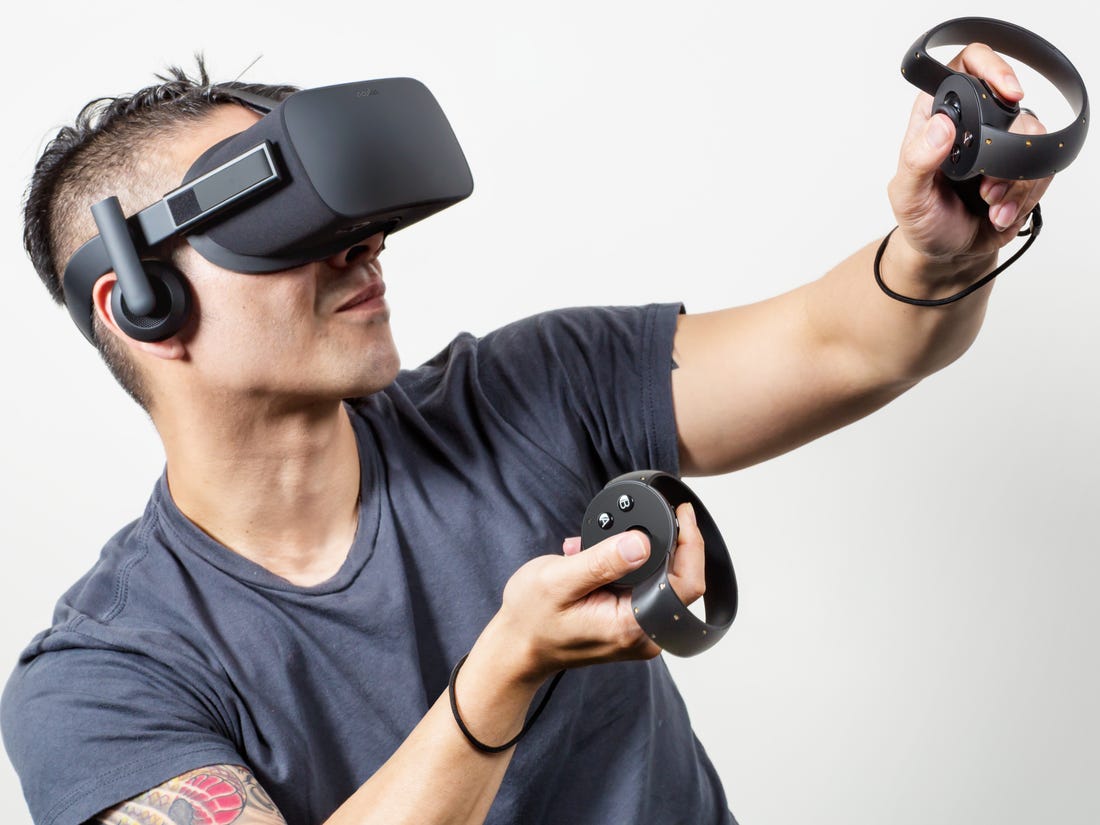
If you’ve ever seen someone doing what the young man on the right is doing, then you’ve seen someone immersed in virtual reality (VR). To an outside observer, it looks kind of strange. But to the person wearing the headset, it can be an intense and absorbing experience that allows you to see and “do” things you that you can’t easily do in the real world.
That’s what makes VR so compelling for educators: learners can observe, manipulate, or practice something in a distraction-free virtual space. At the University of Alberta, for example, Occupational Therapy students are using VR headsets to practice meeting with and assessing virtual clients.
VR doesn’t always require a headset. For example, last year CTE and CEL helped the Faculty of Environment develop a virtual reality version of a field trip to Waterloo’s spongy bog by using 360 VR and Virtual Tour technology. The resulting virtual tour can be viewed and explored on a PC’s web browser.
Associated with – but distinct from – virtual reality is augmented reality (AR). Essentially, AR is like placing a “layer” of information on top of the world in front of you. The GPS system in your car, for example, is a kind of AR. The four images below also are examples of AR, and all of them are evoked by pointing your smart phone or tablet at a specific target. In the first one, the AR layer is the “fleshed out” version of a dinosaur skeleton; in the second one, the AR layer provides names of organs on an anatomical model; in the third one, the AR layer provides information about the design and history of the painting; and in the fourth, the AR layer renders a historic image of Churchill walking through a bombed area of London over the “live” view of the same area.

Prior to the 2020 pandemic, VR and AR (collectively known as Extended Reality or XR) were gaining momentum across sectors such as healthcare, retail, manufacturing, construction, architecture, conservation, tourism, therapy, and education and research, to name a few. When aviation giant Lockheed Martin introduced VR to optimize employee training, training time was reduced by 85%.
In the current context of remote teaching and learning – but also beyond that to when things return to “normal” – XR is a field that Waterloo could explore to enhance both online and in-class learning, and to help prepare students for future skills and work applications. The possibilities for development and application of XR technologies are myriad, though many challenges – such as cost and usability issues – remain.
Many instructors at Waterloo have already undertaken projects involving XR. Academic support units, too, are spearheading some XR initiatives. For example, CEL and CTE have developed an XR Information Site as a starting point to help the Waterloo community learn about the emerging medium through state-of-the-art examples of XR applications and research across subject areas, along with an overview of the opportunities and challenges of the medium. That information site will be launched in November and its URL will be shared in the next issue of In the Loop.
Additionally, the Waterloo AR/VR Community of Practice group, which was established in 2018 by CTE and CEL, facilitates sessions for faculty and staff who are interested in exploring XR topics and technologies in the emerging field. The most recent session, for example, was devoted to Google Hubs, a free platform for creating virtual meeting spaces that can be “visited” with either a headset or a web browser.

The frequency of the AR/VR Community of Practice sessions diminished after the advent of COVID-19, but efforts are underway to return to a consistent schedule. The next AR/VR Community of Practice session will take place in November, and details will be provided in the next issue of In the Loop. In the meantime, you can join the group or suggest future XR/VR topics by contacting Gillian Dabrowski (CEL) or Mark Morton (CTE), co-facilitators of the group.